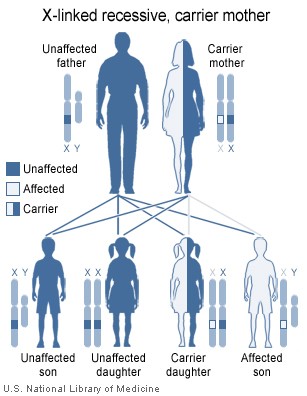Developmental delays and learning disabilities come in as many different forms as there are children. As we learn to understand each, it's important to have conditions correctly diagnosed so children can benefit from early intervention and therapies that will help them grow to their fullest potentials.
Fragile X Syndrome
You've probably never heard of the most common form of inherited mental impairment, fragile X syndrome. Because of its recent discovery in 1991, many doctors and pediatricians haven't heard of it either. Fragile X was the first gene uncovered in the Human Genome Project. Researchers estimate that fragile X affects approximately one in every 2,000 boys and one in every 4,000 girls. But even today, many people with fragile X are still not correctly diagnosed.
Completely Typical At Birth
Most children with fragile X appear completely normal at birth, but gradually they experience developmental delays. As the delays become evident, parents grow confused.
"My daughter still isn't sitting up by herself."
"He's still not talking at 18 months."
"He cries all the time and I feel like a bad parent."
Frustrated, parents visit specialist after specialist in hope of discovering the cause for their children's delayed development.
What's wrong?
Fragile X syndrome is a genetic condition caused by a single gene whose code is changed. The defect causes a disruption between the sending and receiving of messages required for proper brain development and functioning. When this gene is altered, it can cause developmental delays and mild to severe learning disabilities, including mental retardation.
Characteristics
Children may have some or none of the common characteristics, which contributes to the difficulty in diagnosing fragile X.
Some of the most common physical characteristics include:
* Eye & vision impairments
* Elongated face
* Flat feet
* High arched palate
* Hyper-extensible joints (double jointed)
* Large testicles (evident after puberty)
* Low muscle tone
* Prominent ears
Some of the most common behavioral characteristics include:
* Anxiety & shyness
* Autism & autistic-like behavior
* Hand biting & hand-flapping
* Hyperactivity & short attention spans
* Language delays
* Perseveration--repetition of the same actions or words
* Poor eye contact
Testing
Because children with fragile X have normal births, and parents are unaware of this condition, affected families may have more than one fragile X child. Since the gene can pass silently through generations, undetected, and then affect a child, anyone with undiagnosed mental retardation in his or her family should be tested.
A simple DNA blood test is available to determine if a child is affected or if a person carries the fragile X gene. A carrier is a man or woman who may show no signs of impairment, but whose gene changes are passed on to their children. One in every 260 women carries this gene and with each pregnancy she has a 50 percent chance of passing it on. The same test is used for prenatal diagnosis.
Treatment
Currently, only the symptoms of fragile X can be treated. Early intervention programs involving occupational, physical, speech, and sensory integration therapies are most often helpful.
Research
Research on treating the "root cause" of fragile X is rapidly moving forward. Only one protein is missing with the syndrome, so compared to other conditions that involve many other proteins and genes, solving the problem of fragile X syndrome is relatively simple. Research on this gene contributes to finding cures and treatments to other conditions such as Downs syndrome, autism, and Alzheimer's.
FRAXA Research Foundation
The FRAXA Research Foundation was founded to support scientific research aimed at finding a treatment and a cure for fragile X syndrome. With Nobel Prize winning scientists, Dr. James Watson and Dr. Eric Kandel, serving on the advisory board of the FRAXA Research Foundation, there is great hope for future generations.
For more information, contact: The National Fragile X Association 800-688-8765 www.fragilex.org
FRAXA Research Foundation
978-462-1866
Web site: www.fraxa.org
Debra Borchert is author of the soon-to-be-published, Fragile Secret, about her life with her three siblings who are affected by fragile X syndrome. She can be reached by e-mail at debra@fragilesecret.com
COPYRIGHT 2003 Pediatrics for Parents, Inc.
COPYRIGHT 2004 Gale Group



